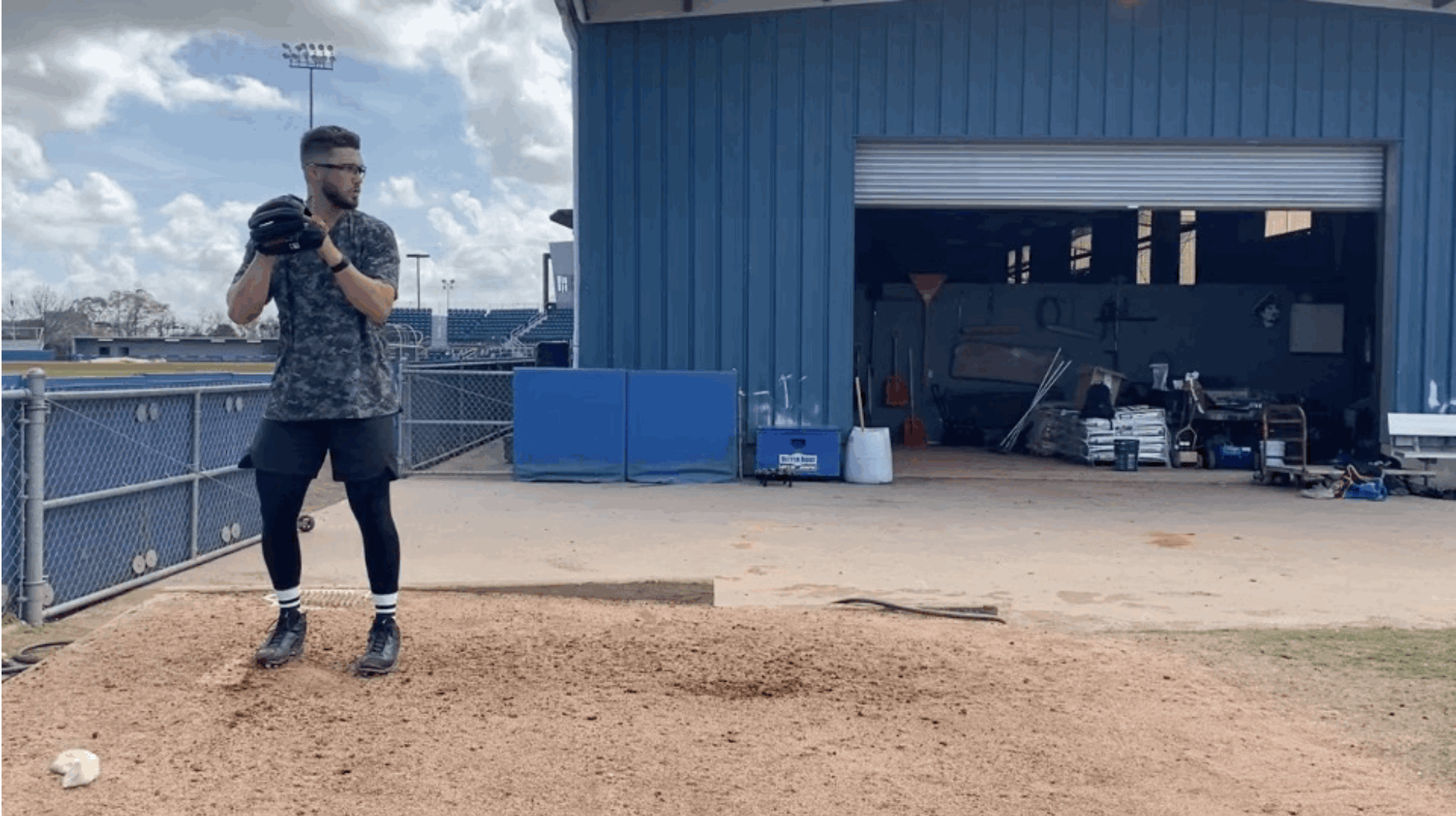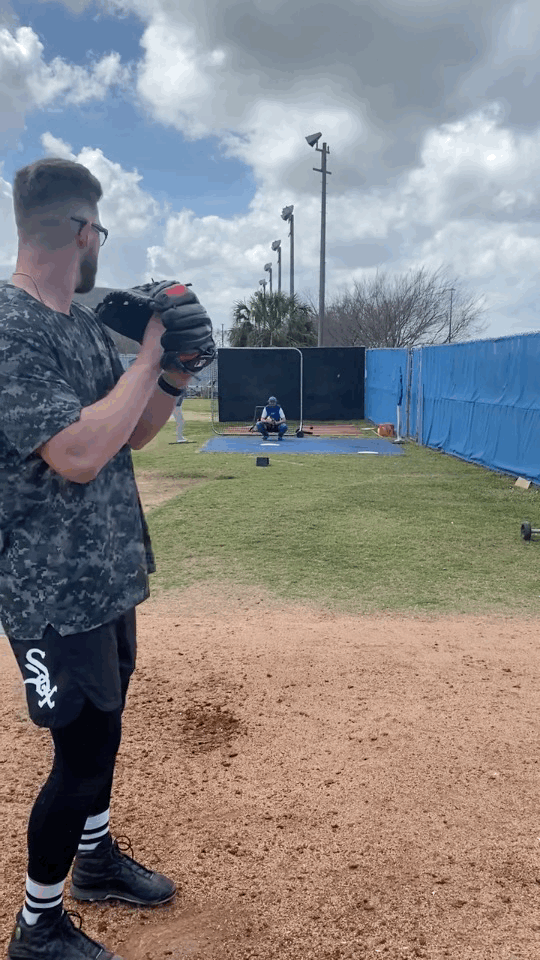Case Study: How Kaleb Roper Used Online Training to Revamp His Fastball

In October 2019, Kaleb Roper was coming off his first year in pro ball with the White Sox. excited about what 2020 had in store before COVID-19 seemingly shut down the world in an instant. In a sudden turn of events, Roper needed a new plan. After training all summer and throwing well during instructs, he reached out to Driveline to begin his remote training program.
Roper, a right-handed pitcher, was drafted in the 29th round of the 2019 MLB Draft out of Tulane University. He spent 2019 in the Rookie League, where his fastball sat between 91-94 mph and topped at 95 mph. Coming out of instructs in 2020, Roper was throwing more in the 90-93 mph range, occasionally reaching 94 mph. His fastball has an elite movement profile, averaging nearly 20 inches of lift.

Roper signed up for Driveline online pitching training so he could spend time at home with family but still get world-class pitching training to continue his development.
On-Ramping and Reload
We used the first six weeks to act as an on-ramp and reload period before getting into high intensity throwing. As a fully remote athlete, access to a biomechanics report or strength assessment was not possible, so during the on-ramp period, we had Roper go through an active movement screen testing for inefficient movements and instability. Pairing this with constant video feedback of the prescribed Plyo Ball ® drills and game film from 2019 and instructs of 2020, we built the baseline that would drive the decisions to make mechanical improvements in his delivery.
In the movement screen, we discovered Roper lacked single-leg stability and struggled controlling posture during various lower body movements, so we prescribed targeted warm up exercises he would do daily to increase stability and body control. On the throwing side, with his arm action we noticed that he tended to have slight “elbow climb” or high shoulder abduction between foot plant and ball release. With his lower body, the timing of his lead leg block was slightly late. This was a result of his pelvis being swung open with his lead leg, rather than driven open with his back leg.

The first six weeks of the remote program we focused on how “the system” of the throw works. This coincided with discussions over proper movement and mechanics, as the throwing intensity was low and the goal was to build back throwing fitness with the newly implemented throwing schedule. We wanted to make sure he was doing the drills properly, rather than just doing the drills just to do the drills.

The best example of this was attacking the high elbow climb in pivot pickoffs. There was not a specific cue given, rather a continual conversation about what it should look like, athlete education, and discussion of “feels” that seemed to accelerate the process of having a cleaner arm path.
The lower half discussion was a bit more technical and cue-filled. Since Roper would use his lead leg to initiate rotation of the pelvis, the plan of attack was to keep his pelvis closed longer so the back leg could do its job and initiate rotation. The two cues that were decided on were: hold the belt buckle towards the short stop, and keep the hips in line with a right-handed batter. The goal was to create and maintain tension in the rear hip longer than what he was doing at the time.
Maximizing velocity
The on-ramp lasted into the first week of January 2020. After the on-ramp, we used the next three weeks to push high output throwing. Our goal was back-to-back 5 oz. pulldowns at 100 mph before shifting the focus to the mound. This phase would normally be longer given a full off-season (4-6 weeks), but because of unknown time constraints, we made the decision to better focus the remaining time we had making sure the on-ramp and pulldown work would translate to increased velocities on the mound.
The last weekend of January marked Roper’s first high-output day on the mound. We used the next five weeks to continue maximizing velocity once a week. We used the video and velocity from high-intent days to monitor week-by-week changes and set a goal for the following week. Going into March, Roper was already throwing at or above his 2020 instruct velocities in bullpens and was nearing his top fastball velocity of 95 mph from 2019. At this point, we knew there was roughly a month before he would have to report for spring training, so we increased the frequency of high-output days to twice a week to prepare for the spring training throwing schedule.

The month of March consisted of a 90-percent bullpen on Tuesdays, sitting in the 88-92 mph range, with the option to let no more than three fastballs go at the end, and a 100 percent bullpen on Fridays for the first two weeks. The goal was to make sure the increased frequency in high-intent throwing did not impact his ability to reach top end velocities on the Fridays before moving into a live-at bat setting. By the end of the offseason, Roper’s bullpen and live-at bat fastball velocities were all above his 2019 average and max.

Using Trackman data from two live sessions, we can see how the increased velocity improved the quality of the fastball in comparison to big league averages, using our “Blob” tool. The chart below shows how the fastball has not only improved since 2019—but since Roper left instructs. Over a similar sample size, the average velocity climbed, and Roper has been above his 2019 peak of 95.1 mph in each outing in 2021.
We’re excited to see what Roper does this MiLB season.
Comment section